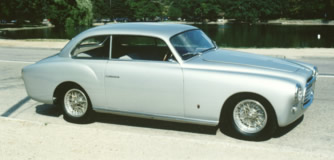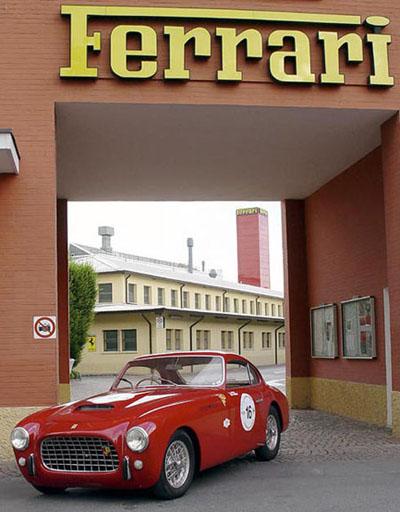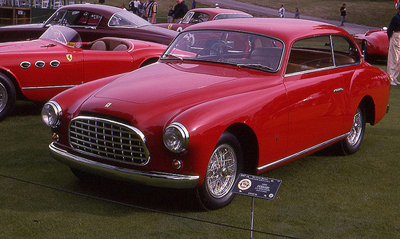|
The styles even varied significantly within the examples produced by a single coachbuilder, notably those from the Vignale design studio. This series of cars carried coachwork by Ghia, Ghia Aigle, Pininfarina,
Stabilimenti Farina, Touring, Vignale, and even the British firm Abbott produced a rather ungainly cabriolet, that has long since been re-bodied in the style of a Touring barchetta.
The Export competition versions
carried even chassis numbers on a 2250 mm wheelbase chassis normally with an E or ED suffix to the number, whilst the Inter road models were constructed on a 2600 mm wheelbase chassis in the odd number road car sequence,
initially with an EL suffix, and then with an EU suffix. At least that is the theory, but some examples that are obviously road cars from their design and equipment carry even chassis numbers, exemplifying the dual purpose
nature of the Ferrari production of the time. Up to this point the standard steering layout had been right-hand drive, in the racing tradition, but approximately midway through 1952 the 212 Inter series started to become
equipped with left-hand drive as standard, obviously to make them more practical, as this was the normal steering position in the majority of markets in which they were sold.
The last Stabilimenti Farina bodied car was
built on a 212 Inter chassis. This model also saw the beginnings of a long-term liaison with Pininfarina, with their first coachwork renditions on a Ferrari chassis, which were somewhat conservative when compared to the more
flamboyant offerings from Vignale, but were the start of establishing a homogeneous identity for the Ferrari marque as the company moved into greater road car production numbers.
The 212 models featured the traditional
60˚ V12 engine based on the original Colombo design, but now with a bore and stroke of 68 mm x 58.8 mm, to give a cubic capacity of 2562 cc. As with the preceding models, the competition designated cars were normally
fitted with triple twin choke carburettors, although there are exceptions, and the road versions with a single twin choke unit, with the three carburettor arrangement available as an option, providing a power output ranging
between 130 and 150 bhp. The chassis construction principles and suspension layout were virtually identical to the preceding 166 and 195 Inter models.
|


